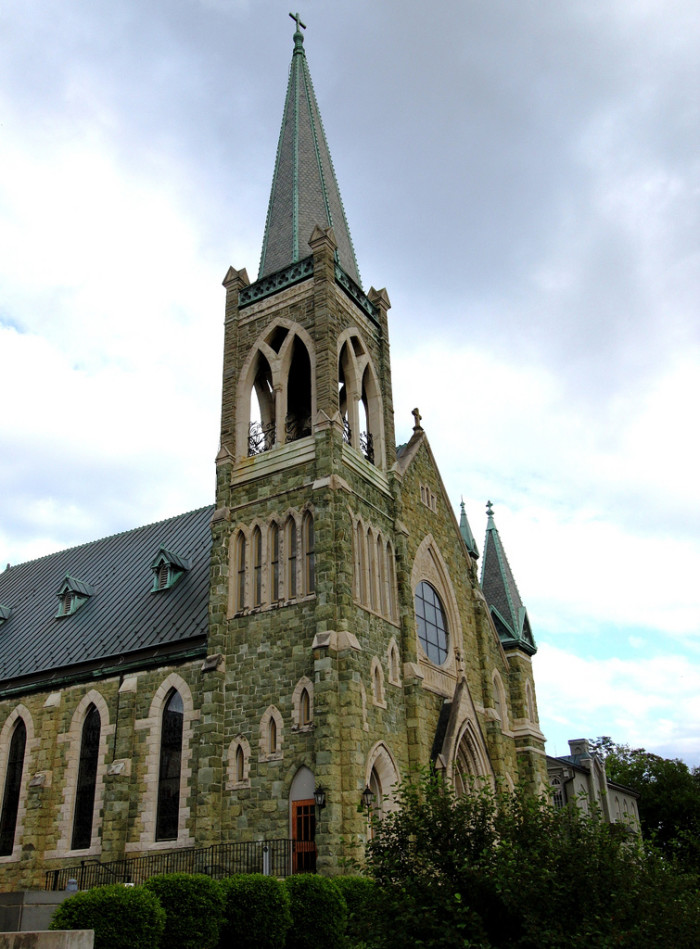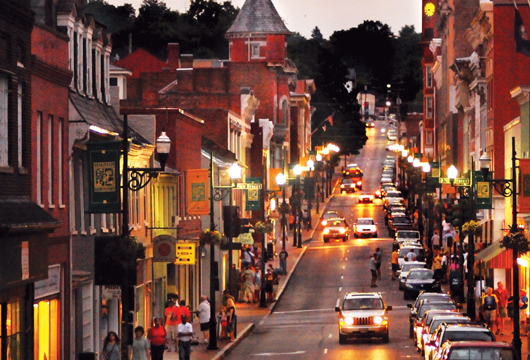An Architect’s Paradise
Warm summer weather draws with it dozens of visitors to Staunton’s bustling heart, it’s downtown. From locally-brewed coffee to cuisine for any appetite, wine-tasting to antique-hunting, downtown hums with vivacity. Perhaps the only thing that lures pedestrians’ eyes away from the buffet of storefronts is the architecture that surrounds them. Virginia Living magazine enthuses, “The city’s greatest spectacle is the cityscape itself, a magnetic panorama of period architecture that draws the visitor in like a painting by Norman Rockwell.”1 Gothic, Victorian, Romanesque, and downright striking, Staunton’s eclectic architecture enjoys far-reaching acclaim, not to mention, an extensive history. From 1891 to 1911, this picturesque mountain town had been the drawing-board for the architectural mind of T.J. Collins.


Staunton’s iconic Marquis Building is not only a lovely architectural marvel, but also served as the office of the man who transformed the look of the city forever.2
The agricultural and mineral boom in the Shenandoah Valley at the end of the 19th century enticed a sea of budding architects. Hearing the promise of wealthy patrons in need of commercial properties, the former Union soldier and architecture prodigy T.J. Collins traveled from Washington, D.C. to enlist under the Staunton Development Company.3 Within two short decades, Collins and his two sons had fashioned an independent business based in the Marquis Building, a business that permanently embossed the entire city with the stamp of their legacy. Over 200 Staunton buildings bear Collins’ signature: the Augusta County Courthouse in downtown, the Arista Hoge House on Kalorama Street, and the still-functional Staunton train station, to name a few. Each structure stands proudly as a testament to the popular building fashions at the turn of the 19th century, and more importantly, to the ingenuity of an artist.


Collins’ first construction here, the Saint Francis of Assisi Catholic Church, still towers over the Staunton skyline.5
According to Bill Frazier of Frazier Associates, “It was in this dynamic age of high Victorian eclecticism, Richardsonian Romanesque, Beaux-Arts revivalism and emerging (modern) architecture that Collins practiced an eclectic approach with a continuing preference for Romanesque forms.”3 In fact, this influx of differing artistic influences on the American architect was precisely the energy that Collins craved, inspiring him to undertake his first project, the Saint Francis of Assisi Catholic Church. In 1895, he designed this English Gothic cathedral for the numerous Irish immigrants who had taken root in Staunton.6 Reminiscent of churches in the Irish homeland with its skyward towers and greenstone bricks, the cathedral appeared as if it had been physically transplanted from overseas. However, its style did not carry on into his later works. After all, as Frazier emphasizes, the period in which Collin lived was “one of the most creative, complicated, and controversial periods of American architectural history.”3


Collins’ drawing for the C&O Station, now home to the Depot Grille as well as a functional Amtrak station, reveals how little its design has changed over the years.4
Collins’ English Gothic cathedral gave way to a preference for a Richardson Romanesque flare in his design for the Arista Hoge House in 1891, followed by a Beaux-Arts inspired Augusta Country Courthouse in 1901, and capped with the Italian Renaissance Revival blueprint for the Dixie Theater in 1912.6 Clearly, Collins did not linger over any single architectural mold for long. The result is a Staunton brimming with heterogeneity, each building its own microcosm of interesting stylistic detail. Without a doubt, he infused Staunton with a distinctive character that lasts to this day, and a stroll through its streets showcases a number of his designs. While the town may not be named after him, T.J. Collins created his own city in the foothills of the Shenandoah Valley.


Thanks to Collins, Staunton has become one of the most beloved small towns in America.1
Sources
- http://www.visitstaunton.com/feature/downtown-architecture
- https://www.pinterest.com/natannwhite/staunton-va/
- https://www.usatoday.com/story/news/2017/05/24/tj
- http://historicstaunton.org/preservation-in-staunton
- http://www.onlyinyourstate.com/virginia/14-churches
- http://porterbriggs.com/t-j-collins-architect/





